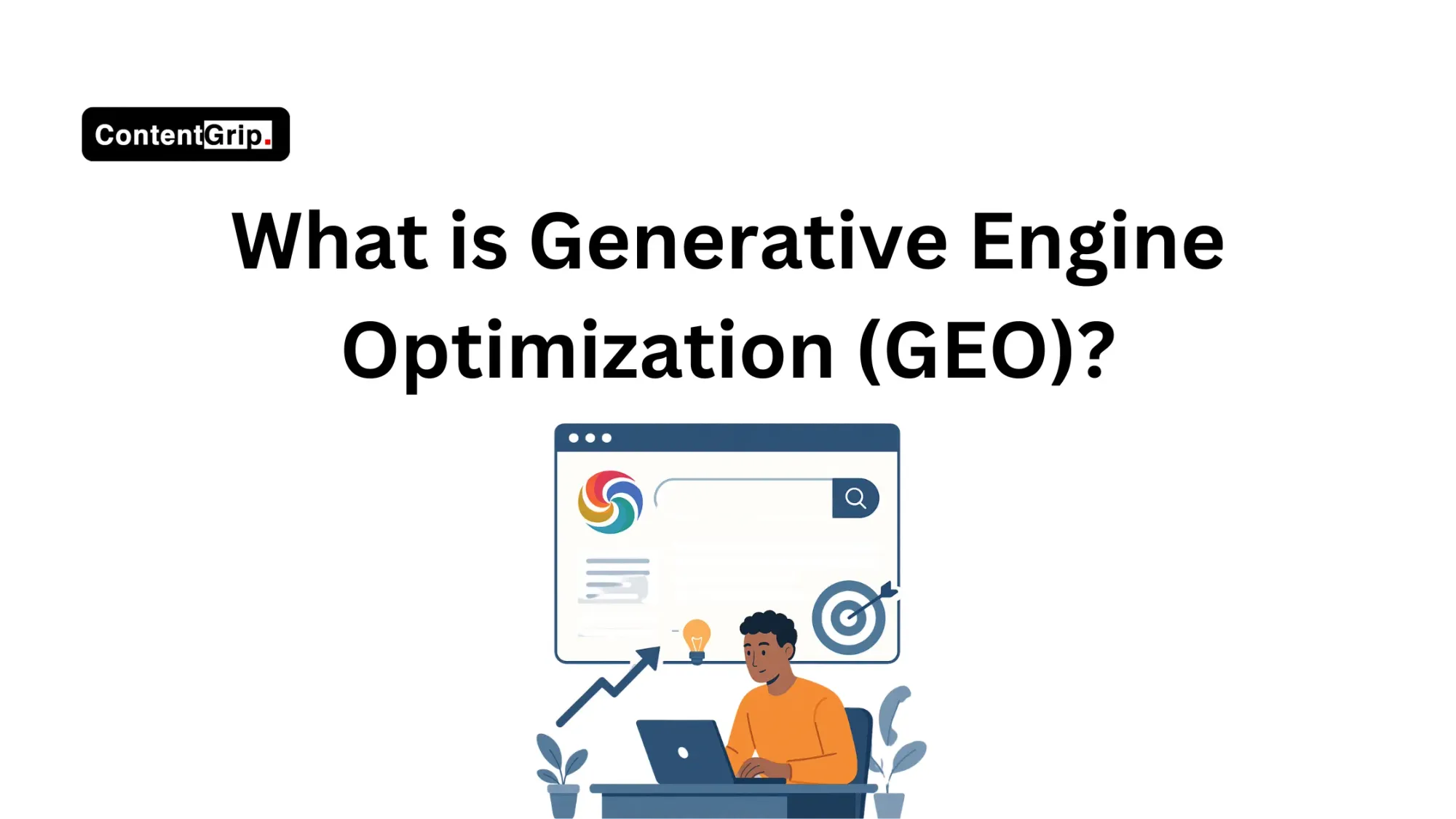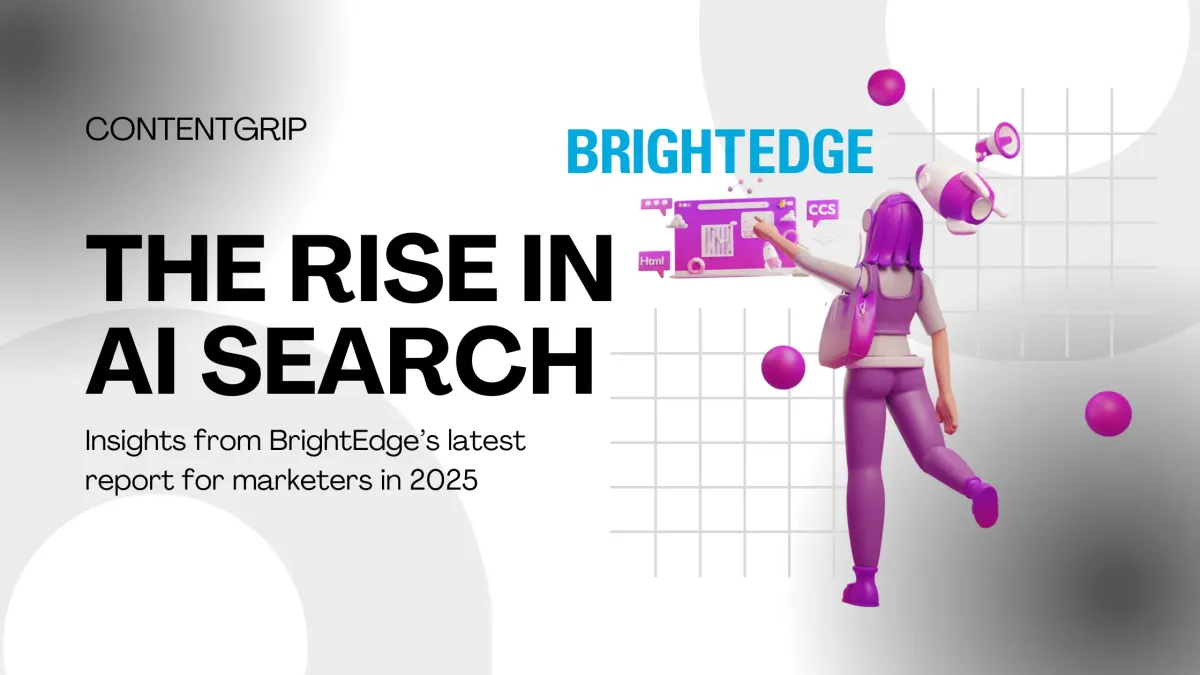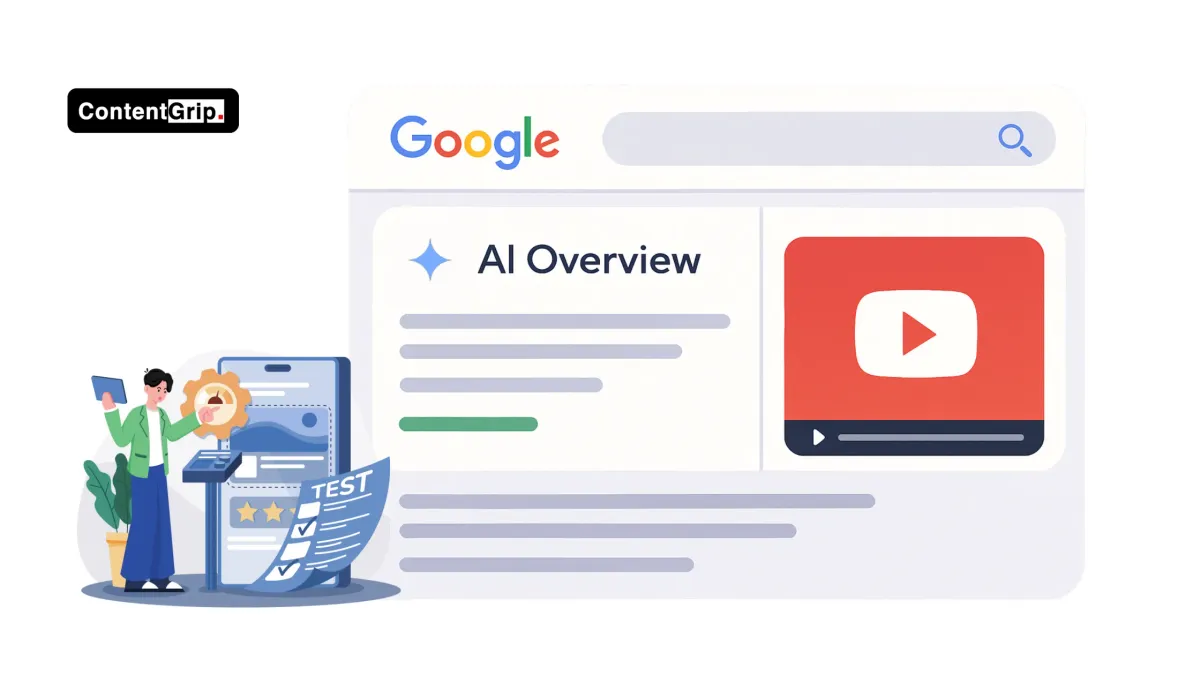What is generative engine optimization (GEO)? Why marketers can’t ignore it now
As generative engines rewrite how we find information, marketers need a new playbook. GEO is that strategy.

Traditional SEO isn't dead, but it’s no longer the whole game. Enter Generative Engine Optimization (GEO), the emerging strategy for getting your content noticed by AI-first interfaces like ChatGPT, Google’s Search Generative Experience (SGE), and Perplexity.
These platforms aren’t just serving up links—they’re composing full, human-like answers that cite sources and summarize insights. If your content isn’t tuned to this new mode of retrieval, you might be invisible to a growing share of your audience.
As of May 2025, ChatGPT pulls in over 122 million daily users, and platforms like Perplexity and Microsoft Copilot are rapidly becoming the norm for information-seeking. Zero-click searches, AI-generated answers, and declining click-through rates (CTRs) on traditional SERPs signal a clear shift in user behavior. GEO is your strategy for navigating this shift.
This article explores what GEO is, why it matters now, and how marketers can adapt to stay relevant in an AI-powered search landscape.
Short on time?
Here’s a table of contents for quick access:
- What is Generative Engine Optimization (GEO)?
- Why GEO matters for marketers right now
- How generative engines rank content and how to optimize for them
- GEO tools and platforms worth exploring
- GEO vs traditional SEO: should you abandon old practices?
- Final thoughts: future-proofing your marketing with GEO

What is Generative Engine Optimization (GEO)?
GEO is the practice of optimizing your content to appear in AI-generated responses, not just in traditional search rankings. It’s about structuring your pages and articles so that large language models (LLMs)—like those behind ChatGPT, Gemini, and Claude—can easily retrieve, interpret, and reuse your insights.
While SEO focuses on ranking well in SERPs and AEO (Answer Engine Optimization) targets featured snippets, GEO goes a step further. It prioritizes:
- AI visibility: Getting cited in tools like Perplexity or shown in ChatGPT’s references.
- Semantic structure: Emphasizing clarity, schema markup, and scannable formats that LLMs can digest.
- Topical authority: Offering full-topic coverage that reflects subject expertise.
- Dynamic alignment: Updating regularly to stay compatible with how AI engines evolve their retrieval behavior.
If SEO was about keywords and backlinks, GEO is about being contextually indispensable to the AI models rewriting the web.
Why GEO matters for marketers right now
The numbers speak for themselves:
- AI search is going mainstream: Over 13 million U.S. internet users now rely on generative AI for daily search, with projections topping 90 million by 2027.
- Traffic patterns are changing: U.S. retail sites saw a 1,300% surge in AI-generated search referrals during the 2024 holiday season.
- Organic traffic is under threat: 80% of consumers use AI content for at least 40% of their queries. That’s led to an estimated 25% drop in organic traffic for some categories.
- CTR is falling: New research shows up to 19.98% decline in click-through rates for non-branded keywords, as AI summaries crowd out organic listings.
Bottom line: if your content isn’t showing up in AI results, you’re not just losing SERP position—you’re losing mindshare and market share.

How generative engines rank content and how to optimize for them
Unlike traditional search engines that rank links, platforms like ChatGPT, Google’s SGE, and Perplexity generate direct answers by pulling from a blend of crawled websites, trusted databases, and real-time content feeds. This means your content isn’t just competing for position—it’s competing to be quoted.
To get picked up by these AI engines, content needs to be:
- Structured: Schema.org markup (like article, FAQ, and how-to schemas) helps models interpret your content’s intent and hierarchy.
- Authoritative: Well-cited sources, original research, and bylined expertise signal trustworthiness.
- Current: Engines favor content that’s recently updated—especially for fast-evolving topics like AI and martech.
- Clear: Short paragraphs, defined headers, and direct answers improve model comprehension and output quality.
To optimize for this AI-driven retrieval, marketers should shift from keyword stuffing to semantic structuring. Here’s how:
- Cluster your content around key themes to demonstrate depth and contextual relevance.
- Mimic snippet formats by writing concise, fact-based responses to common questions using subheadings and bullet points.
- Implement schema markup so AI tools can clearly parse and prioritize your content components.
- Lean into E-E-A-T—Google’s Experience, Expertise, Authority, and Trustworthiness signals are still influential in generative rankings.
- Refresh frequently to stay visible in dynamic retrieval systems and avoid getting buried by outdated competitors.
Bottom line: if traditional SEO was about speaking Google’s language, GEO is about speaking AI’s.

GEO tools and platforms worth exploring
Several tools now cater to GEO-friendly content workflows:
- AlsoAsked: Surfaces related questions for content ideation.
- Surfer SEO: Audits top-ranking pages and suggests improvements for content optimization.
- Perplexity Tracking: Helps monitor how your content is cited or referenced in AI-generated answers.
- Clearscope & Frase: Streamline content creation with topic briefs and clarity scoring aligned to AI comprehension.
GEO vs traditional SEO: should you abandon old practices?
Short answer: no—GEO and SEO complement each other.
You still need strong backlinks, a fast-loading site, and keyword research. But now you also need:
- AI-friendly formatting
- Answer-style writing
- Strategic topical coverage
Don’t trade your SEO playbook—just expand it. GEO adds a new layer to the strategy stack.
Final thoughts: future-proofing your marketing with GEO
GEO isn’t just a trend—it’s a response to how AI is changing the internet. As LLMs become central to how people access information, content visibility will depend more on machine readability and less on traditional search signals.
In the next 12 months, marketers should:
- Start auditing content for AI readability
- Track AI-driven referrals
- Run experiments to understand what AI tools are surfacing—and why
Adapt early, iterate often, and get ahead while others are still optimizing for yesterday’s web.






